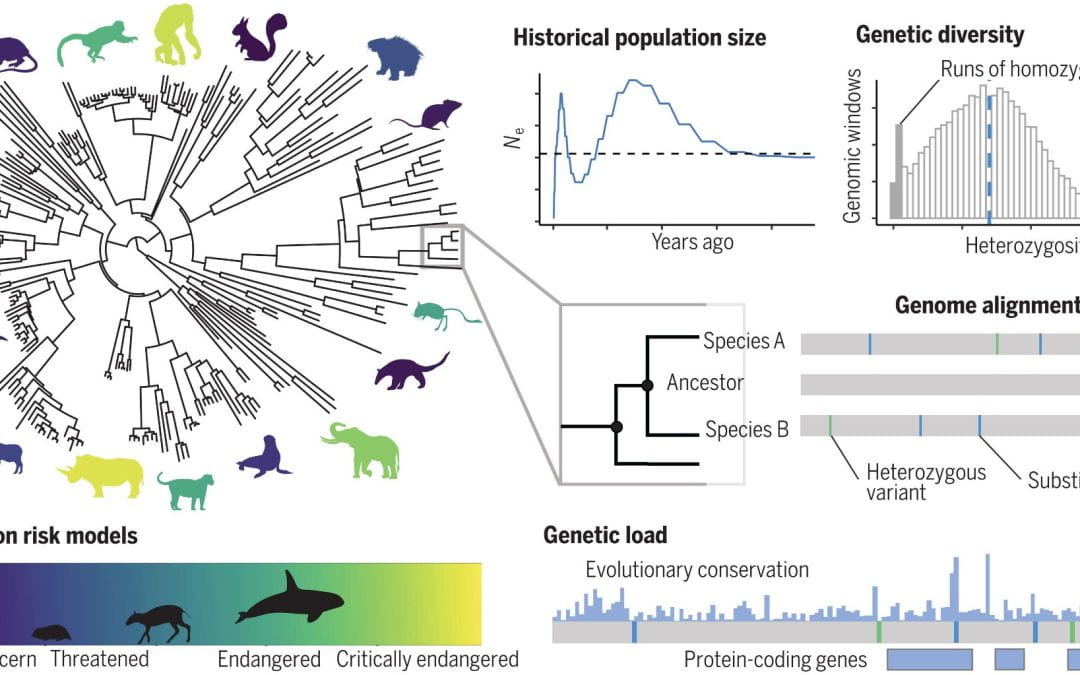Abstract
Species persistence can be influenced by the amount, type, and distribution of diversity across the genome, suggesting a potential relationship between historical demography and resilience. In this study, we surveyed genetic variation across single genomes of 240 mammals that compose the Zoonomia alignment to evaluate how historical effective population size (Ne) affects heterozygosity and deleterious genetic load and how these factors may contribute to extinction risk. We find that species with smaller historical Ne carry a proportionally larger burden of deleterious alleles owing to long-term accumulation and fixation of genetic load and have a higher risk of extinction. This suggests that historical demography can inform contemporary resilience. Models that included genomic data were predictive of species’ conservation status, suggesting that, in the absence of adequate census or ecological data, genomic information may provide an initial risk assessment.
Read on Science Magazine.
